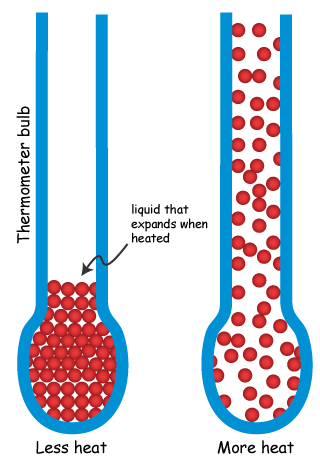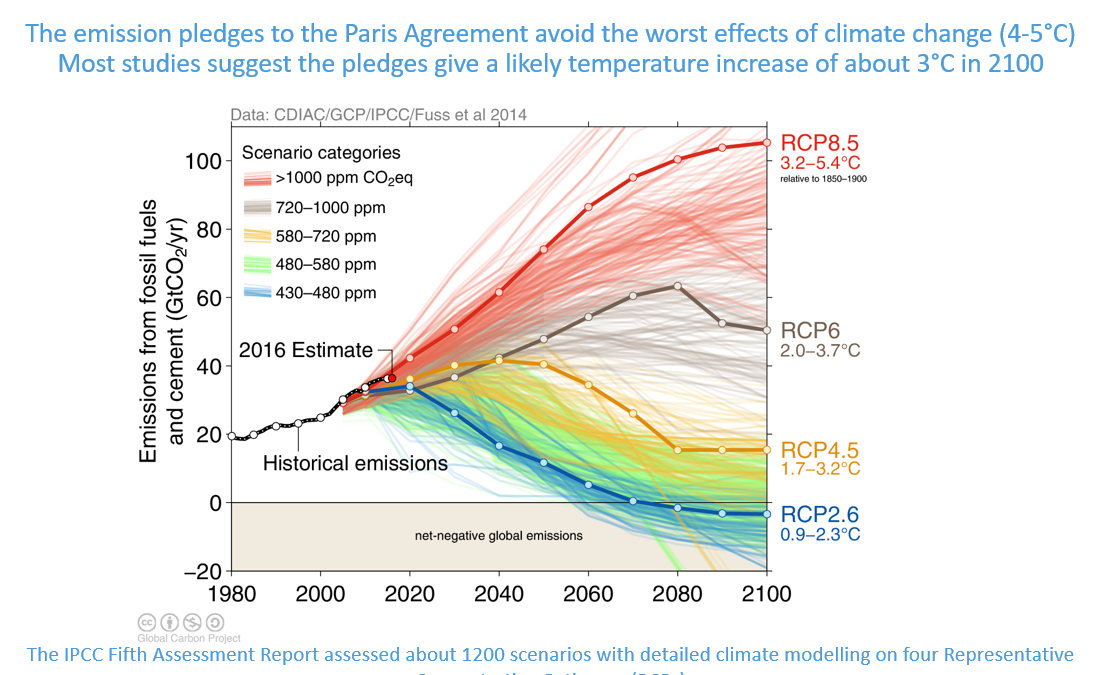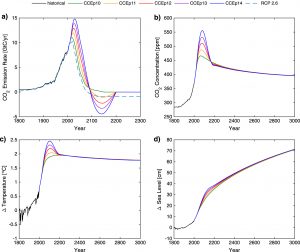Sea levels are rising at alarming rates due to green house gas emissions that have increased atmospheric temperatures. When most people think of sea-level rise the first thing that comes to mind is melting glaciers and icebergs, however, one the significant, but lesser known, contributors is actually thermal expansion.
What is thermal expansion?
If an object is heated its atoms vibrate faster and spread out causing the object to expand. This is known as thermal expansion. When it cools the atoms slow down and the object shrinks.

Thermal expansion can affect objects we see and use every day. For example, some bridges have expansion joints that allow the bridge to expand and contract without buckling or cracking.

What does this have to do with the oceans?
Just like any other object the ocean responds to changes in temperature by expanding or contracting. The ocean’s surface readily uptakes heat from the air, causing the water molecules at the surface to heat up and expand. This is known as thermosteric sea level rise.
At greater depths and higher pressures water expands even more, which means, for the same heat input ocean water will expand more at deeper depths than water at the surface, creating even higher sea levels.
The current climate and the future of our oceans.
Under the 2015 Paris Agreement policy makers agreed to “Holding the increase in global average temperature to well below 2⁰C above pre-industrial levels and pursuing efforts to limit the temperature increase to 1.5⁰C above pre-industrial levels”.1 Policy makers suggested artificially removing CO2 from the atmosphere in order to reduce global average temperatures and reverse anthropogenic induced climate change.

Changes in atmospheric temperatures directly lead to increases and decreases in the temperature of the oceans. If the average global temperature rises so will the average temperature of our oceans.
Between 1993 and 2010 the rate of global mean sea level rise was 3.2 mm per year.3 Thermal expansion of the oceans accounts for 34% of that, at a rate of 1.1 mm per year.4
Due to the large heat capacity of the ocean and amount of time it takes for water to circulate there is a delay before the full effects of warming can be seen. This also means that there would be a delay between a reduction in atmospheric temperature and the cooling of the oceans.
Tokarska and Zickfeld modeled sea level response to several scenarios of atmospheric CO2 concentrations.5 They found that even when large amounts of CO2 are artificially removed, it would take several centuries for global mean thermosteric sea levels to decline.

To learn more about the causes of sea level rise check out NASA’s Global Climate Change page.
References
1Paris Agreement: United Nations Framework Convention on Climate Change, Paris Agreement, http://unfccc.int/files/essential_background/convention/application/pdf/english_paris_agreement.pdf, Accessed July 12, 2017
2http://www.globalcarbonproject.org/carbonbudget/16/presentation.htm
3Church, J.A., P.U. Clark, A. Cazenave, J.M. Gregory, S. Jevrejeva, A. Levermann, M.A. Merrifield, G.A. Milne, R.S. Nerem, P.D. Nunn, A.J. Payne, W.T. Pfeffer, D. Stammer and A.S. Unnikrishnan. 2013. Sea Level Change. In: Climate Change 2013: The Physical Science Basis. Contribution of Working Group I to the Fifth Assessment Report of the Intergovernmental Panel on Climate Change [Stocker, T.F., D. Qin, G.-K. Plattner, M. Tignor, S.K. Allen, J. Boschung, A. Nauels, Y. Xia, V. Bex and P.M. Midgley (eds.)]. Cambridge University Press, Cambridge, United Kingdom and New York, NY, USA.
4Purkey, S. G., G. C. Johnson, and D. P. Chambers. 2014. Relative contributions of ocean mass and deep steric changes to sea level rise between 1993 and 2013. J. Geophys. Res. Oceans. 119: 7509–7522.
5Katarzyna B Tokarska and Kirsten Zickfeld. 2015. The effectiveness of net negative carbon dioxide emissions in reversing anthropogenic climate change. Environ. Res. Lett. 10(9).
